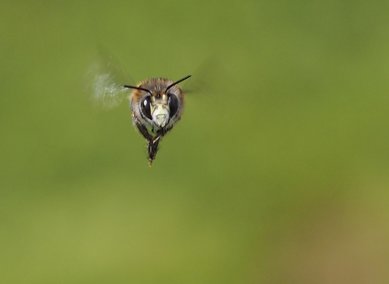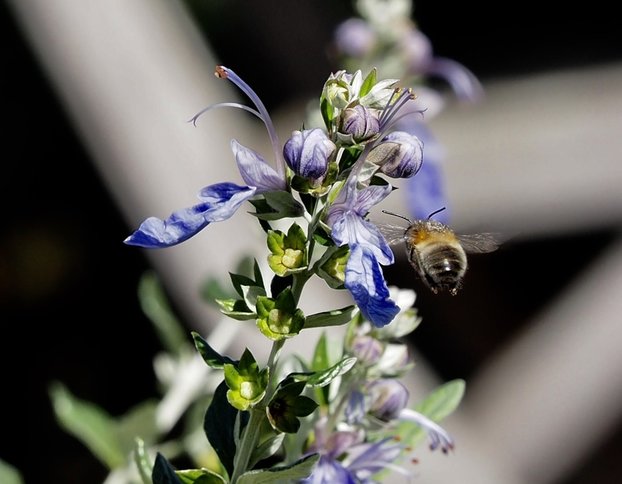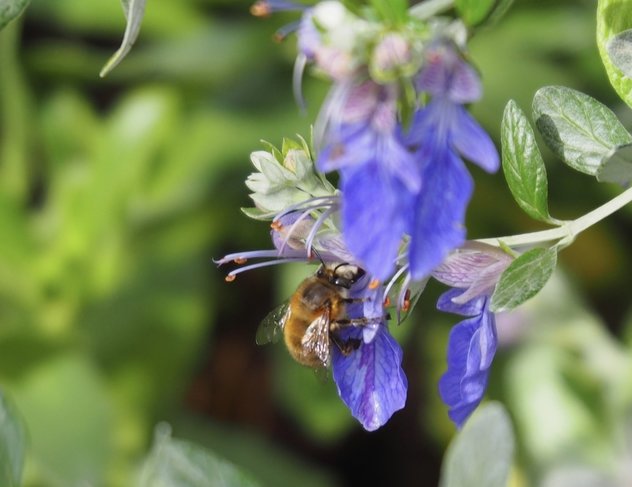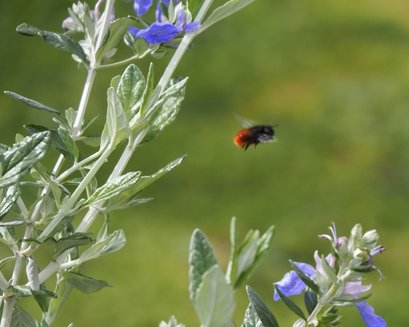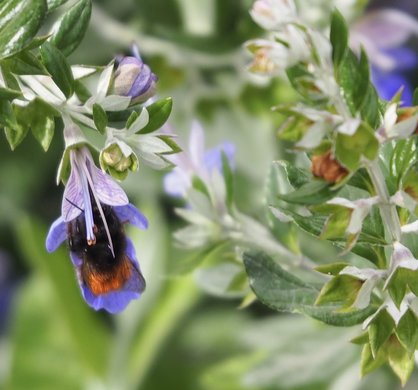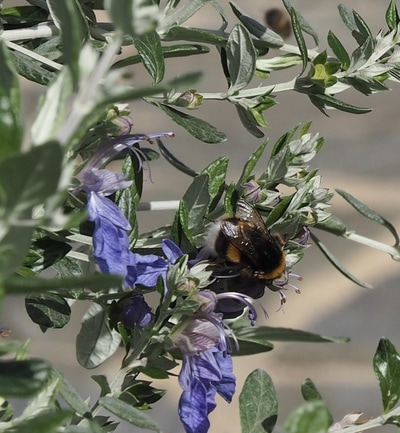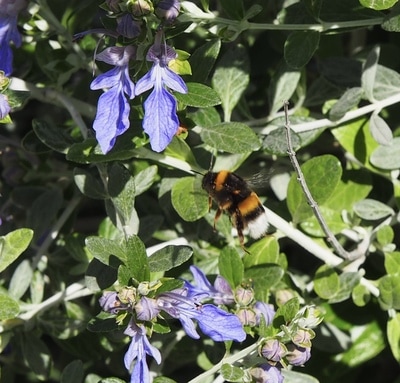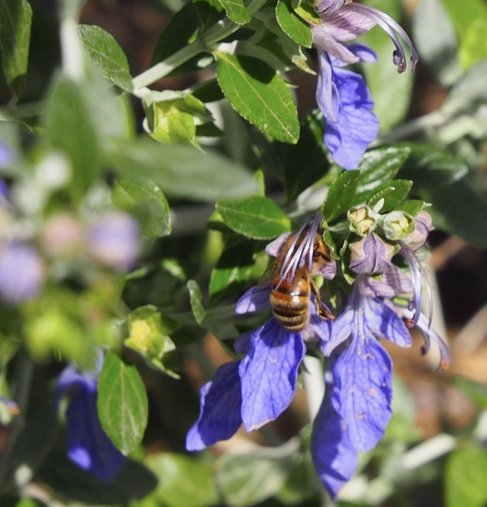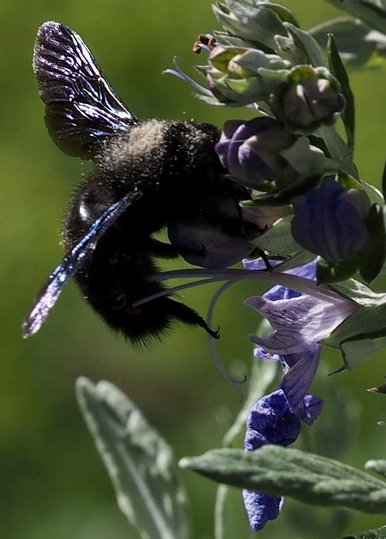This triggered a little more research, as well as a vigil over several hours, to observe how many different species I could spot on one of bees' favourite plants in our garden. After a while I recognised the different buzz tones, and knew what approached before I saw it. In total I counted at least eight species/sub-species. Five were bumblebees, including a little one that hovered and darted at great speed here, there and everywhere (see above and immediately below). I used to think that only hoverflies hovered quite like this, but clearly I was mistaken.
A tangerine-bottom (not its scientific name) also put in an appearance, but rarely stopped moving for more than a second or two. Despite the blurriness of these shots, he (or perhaps she) is just too gorgeous to leave out. I must have said it before, but bumbles look such friendly, happy creatures. Watching them for hours is no hardship.
After further reading told me that, since 2013, 4,574 different wild bee species have been identified in France, I haven't yet attempted to identify the ones I saw. The four pages of my insect book that are devoted to bees must be woefully inadequate. On glancing at the bumblebee section, however, I was intrigued to discover there are such things as "cuckoo bees", with very similar colouring. Described as "social parasites" these have no workers. The females lay eggs in bumble bee nests, often killing the queen, and bumblebee workers rear young cuckoos. I think all those above are bumbles, not cuckoos (bumbles are hairier) but I couldn't swear to it. Bruce has supplied some useful internet links that should help with identification, so I must have a look at those - when I feel strong enough!
At least two types of the more familiar stripey bumble also dropped by - one much larger and more orangey than the other. This bigger one (below right) spent a lot of time clambering through the plant rather than flying daintily from flower to flower.
The biggest, noisiest and arguably clumsiest visitor of the day was one whose identification I am fairly happy with: the Carpenter. Thanks partly to the light, this one is living up to the second half of its Latin name, Xylocopa violacea. It's also demonstrating why bees are perfect pollinators.
We hear a lot about threats to "domestic" or honey bees. Everything from parasites to pesticides and, more recently in France, predatory Asian hornets. Wild bees face the same threats, and scientists increasingly believe that wild bees are responsible for pollinating 80% of flowering plants worldwide.
Different species pollinate different plants. Those with longer tongues, for example, can get to nectar that other bees cannot reach. And only bumblebees can pollinate tomato plants, because only they have the strength to shake flowers hard enough to free the pollen. Artificial pollination methods are not, apparently, nearly as effective. At the moment, according to Pollinis, nearly half of the European bumblebee species is in decline. And already "more than one in six flowering plants is threatened with extinction in France". Studies in the Netherlands and the UK show that over 20% of flowering plants have simply disappeared in the last twenty years.
"Without [bees], there will be no mountain flowers; no blackberry or hawthorn bushes in the countryside, no chestnut or acacia woods; not to mention tens of thousands of insect, bird and mammal species that directly depend on them."
Sobering thoughts for a balmy spring day.
There was one particularly handsome bee I hoped to see, but didn't. As far as I know, it has been absent from our garden for years. Hopefully that's just because we no longer have the plant it loved so much (another blue flowering one). I shall be interested to repeat this exercise a little later in the season, when different plants are blooming - lavender for instance - to see what other species we have locally. I'll add any photos to my new gallery. In June-July our laurel hedge certainly attracts huge numbers of (mostly) honey bees. At times the hum has been so loud I've wondered if a swarm has taken up residence. But no. Since that laurel is non-flowering, the reason for its popularity has remained a mystery to me, until now. More research reveals that what attracts them is a sweet, sugary secretion at the base of new leaves. I look forward to their return as spring turns into summer.
*Pollinis is a nonprofit organization that campaigns for sustainable farming in Europe. It fights for the protection and conservation of pollinators, notably bees, and promotes the transition towards alternative agricultural practices, away from the systemic use of pesticides.
Ongoing research depends solely on donations.
